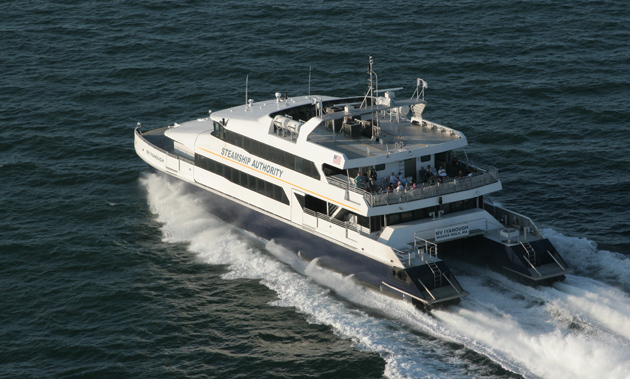In May, the Coast Guard issued a Findings of Concern following an accident where a high-speed catamaran passenger ferry allided with a rock jetty at over 30 knots. Fifteen passengers were injured in the incident that caused almost $500,000 in damage.
Though the Coast Guard did not identify the incident, a similar accident occurred on June 16, 2017, when the 154’x39’x5’ Iyanough was inbound cruising at about 30 knots when it went onto a Hyannisport, Mass., jetty along the harbor channel, running hard aground on the rocks. Fifteen passengers were injured. The Iyanough is operated by the Woods Hole, Martha’s Vineyard and Nantucket Steamship Authority.
As a result of the incident, the Coast Guard strongly encouraged vessel owners/operators to periodically re-assess risks of their operations. These risks, once considered and mitigated, should be reflected in vessel owners' operations manuals.
Purpose. The Coast Guard issues Findings of Concern to disseminate information related to unsafe conditions that were identified as causal factors in a casualty and could contribute to future incidents. Findings of Concern are intended to educate the public, state, or local agencies about the conditions discovered so they may address the findings with an appropriate voluntary action or highlight existing applicable company policies or state/local regulations.
The Incident. While arriving port in evening twilight hours, a high-speed catamaran passenger ferry allided with a rock jetty at over 30 knots. Fifteen passengers were injured and almost $500,000 in damages occurred.
Contributing Factors and Analysis. The mate had not served aboard this high speed craft (HSC) in 10 months, and was unfamiliar with the operation of the vessel’s spotlight. During the return transit, he located one navigational marker as the vessel approached a course alteration point, and the master requested that he use the spotlight to locate another navigation aid. The mate then had difficulty operating the spotlight control switches and the master diverted his attention to help the mate. Once they turned the light on, the master and mate failed to see the navigational markers, missed their turn and subsequently struck the jetty. The vessel did have an electronic chart display and information system (ECDIS), but the master utilized the radar system instead and mistook several radar targets as channel markers. The master mistakenly made the assumption that the vessel was where it should be along its course trackline. Upon review, this vessel’s HSC operations manual did not include the suggested provisions for crew refresher training for operators contained within Navigation and Vessel Inspection Circular (NVIC) 5-01, CH-1, (CHANGE TO NVIC 5-01, GUIDANCE FOR ENHANCING THE OPERATIONAL SAFETY OF DOMESTIC HIGH-SPEED VESSELS) nor was the mate provided refresher training upon his return to the vessel.
Findings of Concern. Coast Guard investigators have identified the following prudent measures to be implemented on vessels in similar service to mitigate the risks associated with the above identified contributing factors:
- Vessel owners/operators are strongly encouraged to periodically re-assess risks of their operations. These risks, once considered and mitigated, should be reflected within their operations manual. If vessel operations are found not to align with the operations manual, the vessel may be considered operating outside of the certificate of inspection (COI). Owners/operators that desire to modify their operations and operations manuals should contact their local Coast Guard Officer in Charge, Marine Inspection (OCMI).
- Vessel owners/operators are reminded that risks include, as in this incident, identifying familiarization gaps and providing training to not only the master, but all crew members when returning from extended absences or on a reoccurring basis (e.g. seasonal, annual, bi-annual).
- Marine inspectors are strongly encouraged to review operations manuals for alignment with NVIC 5-01, CH-1, during inspections to ensure vessels continue to operate in accordance with routes permitted and conditions of operations permitted on the COI. These conditions of operations include training for crewmembers and discussion with the operators of changes in operations since the previous COI issuance to ensure that the operations and operations manuals are aligned.
These findings of concern are provided for informational purposes only and do not relieve any domestic or international safety, operational, or material requirements. For any questions or comments please contact the Office of Investigations and Casualty Analysis, Investigations Division, Commandant (CG-INV-1), at (202) 372-1029 or by email, [email protected].





